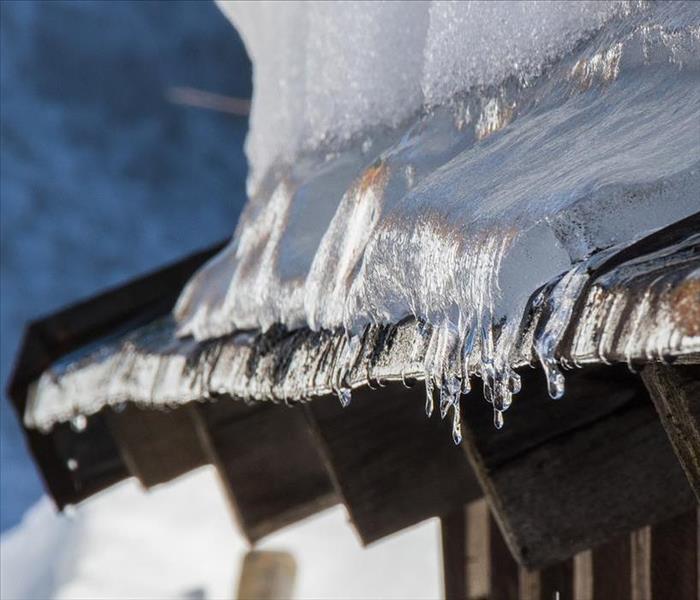In The Know: Ice Dams
1/20/2020 (Permalink)
Many local areas have recently seen their first significant snowfall, indicating that we’re in store for more winter weather in the coming months. Alongside significant snowfall comes the possibility for winter weather to wreak havoc on your home or business. One of the most dangerous types of winter storm damage is ice dams. Ice dams are ridges of ice that form on below-freezing sections of a roof that prevent melted snow from draining off of the roof. When the melted snow cannot escape the roof, it will pile up behind the block of ice. This liquid can then leak down into attics, insulation, ceilings, and other walls within the building through cracks, risking serious damage.
Causes, Effects, and Prevention
After a significant snowfall, ice dams form due to roof temperatures that are not uniform. One factor that contributes to uneven roof temperatures is heat loss from the building. Without proper insulation, warm air from inside of the building can heat areas of the roof, causing snow to melt and contribute to ice dams. When the melted snow that sits behind the block of ice leaks down into the building, mold and mildew can grow on ceilings, walls, and other structures of the building, risking structural damage.
https://www.youtube.com/watch?v=5AGU5wDO0cw
In this video, the formation of ice dams is demonstrated on a model roof, providing a visual explanation of the information above. The video also explains various techniques, both short-term and long-term, that homeowners or business owners can use in order to treat an ice dam. One short-term solution shown in the video is filling a sock with rock salt and throwing it up onto the roof in hopes of breaking up the ice. A long-term solution shown in the video is adding additional insulation in your attic or having a professional spray foam underneath of the roof in order to keep warm air inside of the building.
To avoid the risk of mold growth, it is important to prevent any formation of ice dams on your roof this winter. Should an ice dam form on your roof, call SERVPRO in order to take care of the problem as quickly as possible and spare your home or business from any further damage.





 24/7 Emergency Service
24/7 Emergency Service
